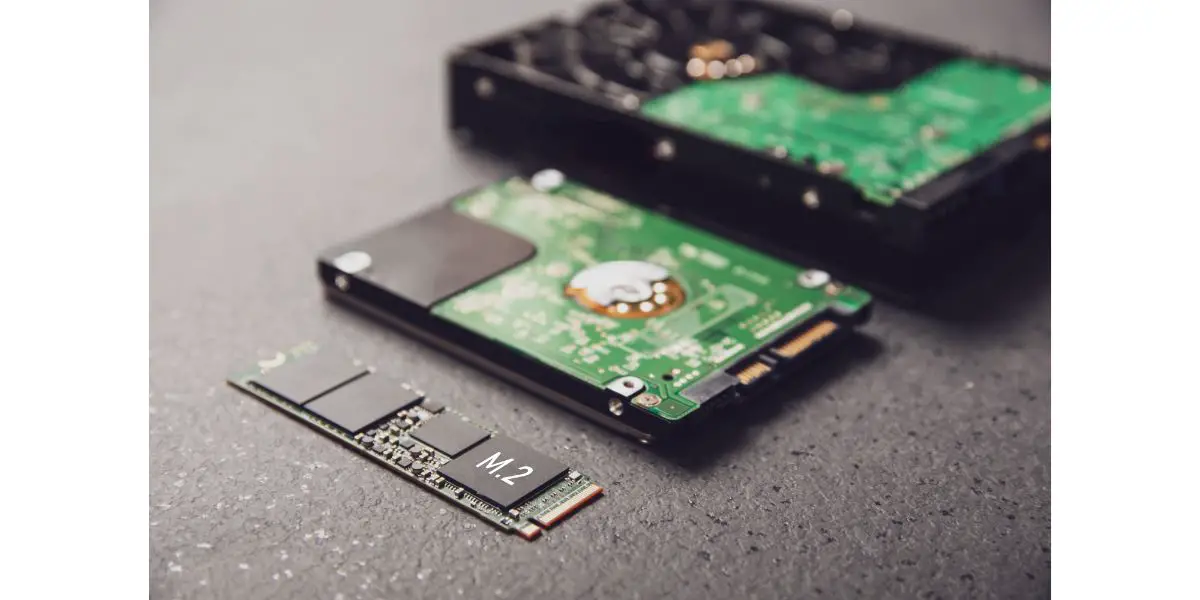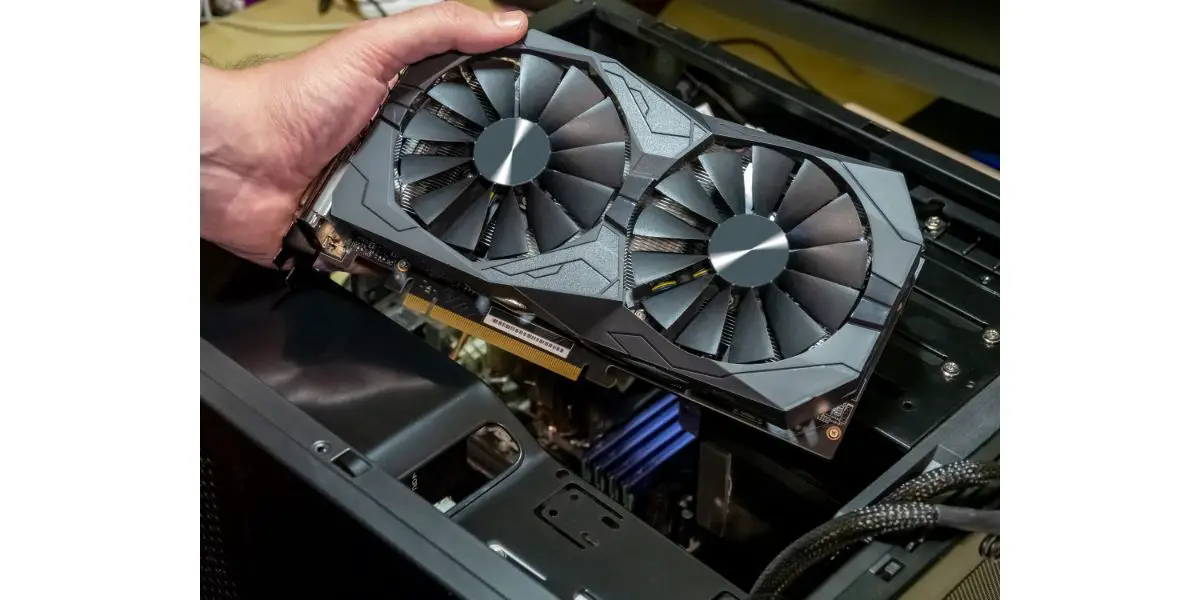Disclaimer: This post may contain affiliate links, meaning we get a small commission if you make a purchase through our links, at no cost to you. For more information, please visit our Disclaimer Page.
It can get frustrating if you’re constantly stuck waiting for rendering to complete. Many of your computer’s aspects affect rendering speeds- but does SSD help?
This article will discuss whether SSD helps or hinders your rendering and how to improve your speed.
Table of Contents
Does SSD Help with Rendering?
SSD stands for solid-state drives. Unlike RAM, these drives store data consistently even when power is off. They are known for being incredibly fast for data retrieval and storage.
They’re non-mechanical, meaning that there are no moving parts. SSD has become a standard for many lower-cost consumer laptops. However, it has very little to do with your rendering speed. SSD can affect certain aspects, but it depends on many factors for whether it truly influences rendering.
SSD gives you access to a larger storage source, making it great for gaming computers. It best stores operating systems, frequently utilized files, and gaming apps.
An SSD will load 4K or higher resolution faster than an HDD because it can read it quicker. Most rendering situations rely heavily on your CPU, GPU, and RAM. Instead, SSD can help you with caching, which could indirectly affect your rendering.
How Does SSD Caching Affect Rendering?
SSD caching is a data management system that utilizes the SSD drive as a cache for your PC or laptop’s bigger hard disk drive. A cache is a memory retained in storage to help data load quicker and easier.
For example, your browser regularly retains cache from websites you visit to increase loading speeds. Similarly, SSD cache helps often-used apps and programs. It loads the programs quicker and makes them easier to use at faster speeds.
Caching happens before rendering ever starts. While it does not directly influence rendering, SSD caching does help load data faster in the memory. This loading allows the process before rendering to go much more smoothly, setting your computer up for success with its rendering speed.
5 Ways to Make Rendering Speed Faster
1. Upgrade Your RAM
Upgrading or increasing your RAM is the number one way to increase your rendering speed, whether for 3D or 2D purposes.
When working on a large project, you want to dedicate as much RAM as possible to the particular program you are using. You can change the amount in your system preferences or close other open programs down.
To upgrade your laptop’s RAM, you must first find the RAM slot inside your computer. Next, align your new RAM module into position. Press down on it gently until it clicks into place.
However, some computers do not allow you to access your RAM easily. Sometimes it’s soldered into your motherboard. You should check that you can replace your RAM yourself first before attempting.
Every device has a limit of RAM it can handle. Before you upgrade, check your RAM capacity.
2. Install an SSD Cache
While it only indirectly affects rendering speed, an SSD cache will help improve your computer’s overall speed. One good option for you is to use a software Intel developed for SSDs they manufacture, called Rapid Storage Technology (Intel RST).
To install this SSD cache, all you will need is the following:
- A motherboard that supports SSD caching- You could substitute this with a chipset that allows Intel’s Smart Response Technology.
- An SSD- You only need one with either 32 or 64 GB, but you could always get a larger one if you prefer.
- A hard disk drive
- Caching software for SSD- You can usually find this from either Intel or your motherboard’s manufacturing company.
Follow these steps to install Intel RST on your computer:
- First, connect your SSD to your laptop or PC.
- Next, place your Intel RST disc into your computer’s CD drive. Note: This setup only works if you have a disc drive for your laptop.
- Open the program and select “Accelerate” at the top of the screen.
- When prompted, click on the “Enable Acceleration” link.
- Now select your SSD device and choose the amount of memory you want for the cache. You will also decide on which hard drive you want to accelerate.
- Choose the acceleration mode you desire (many users recommend “enhanced mode”).
- Click on “OK.” The configuration will start immediately. You’ll notice a change in your PC’s speed shortly after.
3. Adjust a Few Rendering Settings
If you use After Effects for a big project, you can optimize your rendering by adjusting a few settings. Our top three settings we recommend you change are:
- Enabling multi-frame rendering
- Turning on cache frames when idle
- Using GPU acceleration
You likely need to handle more frames at once than your CPU normally expects. The more cores your CPU has, the more frames it can simultaneously support. Enable multi-frame rendering by navigating to the Edit tab. Open Preferences and select Memory and Performance.
Turning on cache frames when idle gives After Effects permission to continue rendering your frames while you step away. To turn on this feature, locate the Composition tab and select Preview. From the Preview menu, select Cache Frames When Idle.
The faster your GPU is, the better your computer will render things. You’ll find this setting under Profile, then click Project Settings and head to the Video Rendering and Effects tab. Under that tab, you’ll choose the option that says “GPU Acceleration.”
4. Upgrade Graphics Card
Many rendering programs heavily rely on graphics cards- images and videos are at the heart of the rendering process. Your process will get bogged down if your graphics card is outdated or insufficient.
Installing a new graphics card is difficult and not something everyone can do without help from a professional. Not all laptops give you access to your graphics card- making it easier to buy a new laptop instead of troubling yourself with the hassle.
However, if you want to work through upgrading your GPU and graphics card, follow these steps:
- Download and install DDU (Driver Display Uninstaller).
- After installing DDU, boot your computer up into safe mode.
- Run DDU in safe mode. Select the GPU and choose Uninstall.
- Once the uninstall finishes, reboot the computer.
- Turn it back off again and swap graphic cards.
- Turn your computer back on and download the necessary drivers for your new GPU.
- After installing the drivers, restart your computer one more time.
5. Find Better Rendering Software
Not all software is created equal. Some are more efficient than others, running at better speeds that help you get more work done.
Here is a list of our top three choices for 3D rendering software:
- Enscape: Enscape is great for real-time rendering. It offers fast and easy conversions for turning a model into a 3D-rendered experience.
- V-Ray by Chaos: This program is award-winning and utilized by many industries. You can work with 3D applications, realistic rendering, and real-time scenes.
- Blender: Blender is known for being easy to learn, making it great software for beginners. However, professionals love it too for its Cycle Render Engine.
You can experiment with different rendering software to see whether the software or your machine is the problem.
Conclusion
SSD does not directly impact rendering. It is, however, a great tool for improving cache storage, which helps increase the rest of your computer’s speed.
You should enhance your GPU or RAM or test new software to improve your rendering speed.


